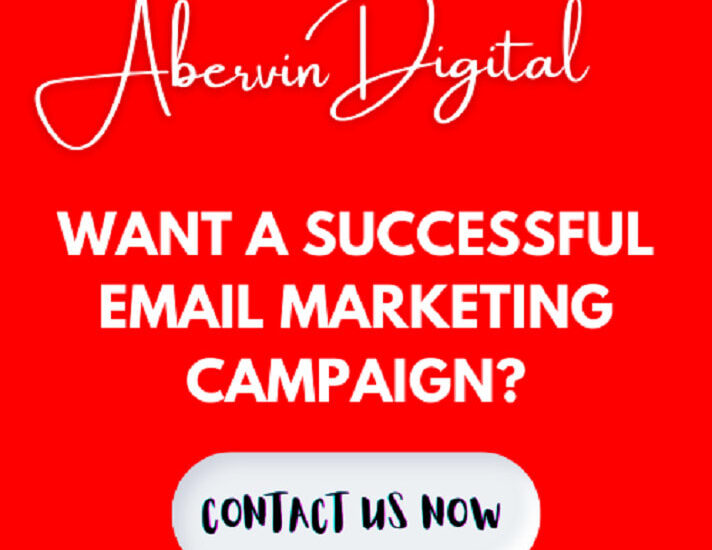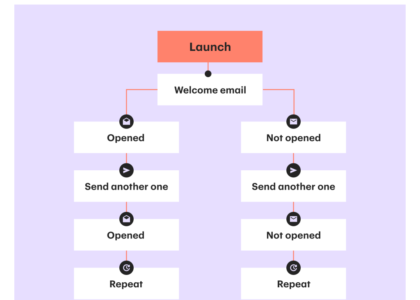As we cruise through 2025, keeping your email list organized and intentional is a big deal – not just for growing your brand, but also for keeping things legal and making every email count. Listen… we get it!
Email sounds like a dinosaur compared to TikTok or AI-powered anything. But here’s the thing: in 2025, email marketing still quietly runs laps around other digital channels when it comes to ROI.
We’re not talking small gains either. The average return on every dollar spent on email is about $36. Not impressions. Not reach. Actual cash. It works because it gets straight to your audience – no algorithm playing bouncer, no social platform holding your audience hostage.
But here’s the catch: email only works if your list is healthy. Otherwise, you’re shouting into a void… or worse, getting flagged as spam.
So, what makes a list “healthy”? That’s what we’re breaking down in this blog post where we cover 5 tips for effective email list management in 2025.
Now to understand what makes a list healthy, we have to first understand the difference between a list and an audience.
In email marketing, the terms “list” and “audience” are often used interchangeably, but they represent distinct concepts. While a lot of folks think email marketing is about having a big list, the truth is stockpiling email addresses just gives you a basic list.
An audience, on the other hand, is a curated group of people who actually want to hear from you. They open your stuff. Click your links. Maybe even buy from you. Think of it like this: a list is just attendees at a concert. An audience is the crowd singing your lyrics back to you.
This is where most brands slip up – in turning their list into an audience. The only way to do this is to manage it properly because bad list hygiene (yeah, that’s a real term) doesn’t just mean low open rates, it means a lot of problems:
- Your emails start ending up in spam.
- Your sender reputation is a mess.
- Your revenue potential shrinks.
- And worse… people stop trusting your brand.
It’s just far more trouble than it’s worth so seriously… proper email list management should not be neglected.
So let’s talk about how to do this the right way, starting with the most foundational step: how you build your list in the first place.
Tip 1: Build a Clean, Permission-Based List (Not a Dumpster Fire of Emails)
Collecting email addresses is easy but building a list full of people who actually want to hear from you? That takes some effort but it must be done because your list can only become an audience if it has only those who genuinely want in. Let’s go over what that really means…
If someone types in their email and boom, they’re on your list… this is called a single opt-in and while this will get you a few more sign-ups than the alternative, your list may not be clean – may have bots, lots of typos, and definitely more people hitting “report spam” later.
In fact, to avoid this completely is where something called “double opt-in” comes in. It just means after someone signs up, they have to confirm via email before they’re officially on your list. And sure, you might get slightly fewer signups using the “double opt-in” option, but the ones you do get are way more likely to stick around and engage.
Okay so this is where we appeal to everyone reading this… please stop buying lists. We get clients here at Abervin Digital who buy lists and then ask us why their sender score is low or why they got banned from their email service provider.
Short answer – your list is a MESS!
Again, we get it… buying email lists is tempting, especially if you’re just starting out – but it’s also one of the fastest ways to mess up your email marketing. Not only is it sketchy (and sometimes just illegal), but it can wreck your sender reputation and get you booted off email platforms. Instead, build your list the right way – that’s where lead magnets come in.
Lead Magnets are little freebies or offers people get in exchange for their email. And the good ones feel like a fair trade. For an online store, that might be a discount or a quick product quiz. If you’re in coaching, maybe it’s a downloadable checklist or mini course. For service-based businesses, things like ROI calculators work. Whatever it is, make it actually useful for someone interested in your service.
Now, here’s the thing… even the best lead magnet won’t work if no one sees it – which brings us to… putting your opt-in in the right place.
For instance, placing your subscribe form in your footer is basically making it invisible. You’re better served when you do things like using a pop-up that shows when someone’s about to leave your site, or a call-to-action snuck right into your blog post. You can use sticky bars that hang out at the top of the page or slide-ins that appear as someone scrolls can also grab attention without being annoying. The trick is timing and showing your opt-in when someone’s already locked in with your content – not just throw it at them randomly.
With a valuable well-placed lead magnet, you’re now collecting emails – and doing so ethically, but there’s one more thing you absolutely cannot ignore… stuff like GDPR, CAN-SPAM, and CASL. They sound boring, but they matter and here’s why.
Your audience lives in different locations and their government has their own regulations that you must abide by if you intend to promote your products or services via email there. If someone’s in Europe, you need their clear “yes” to send marketing emails. In the U.S., you have to include an unsubscribe link and your physical address. And Canada is even stricter – the point is, you can’t assume consent, ever. You have to get it!
So in the end the idea is in 2025, to grow you must build a list that’s both permission-based and compliant because this actually works long-term. That said, let’s get into Tip 2 – Segmentation.
Tip 2: Segment Like Your ROI Depends On It – Because It Does
It feels good to be recognized, remembered. You’re more likely to go back to a business that remembers your order, your name, or even the fact that you hate a specific product or service they offer. When a business remembers every customer on their list, the audience feels like that business gets them.
In email marketing, segmentation is the tool that allows you to replicate that feeling at scale.
Instead of blasting the same generic message to everyone, smart marketers break their audience into smaller groups based on things like age, behavior, or how often they engage. Why? Because people are way more likely to pay attention when something feels like it was made specifically for them. It’s not just a marketing trick – it’s human nature. We all tune in harder when something feels personal.
Okay, so how do you actually segment people? Let’s get right into it:
1. Demographic Segmentation
This is basically categorizing people based on things like their age, gender, income, education, and occupation. Like, if you’re selling high-end watches, you probably want to target people who can actually afford them – not broke college freshmen. However, while demographic data is a decent starting point, we cannot stop there. Just because two people are 25 and make the same money doesn’t mean they want the same things. To make the most profit and send messages that tug at every recipient’s heart we combine this segmentation with other segmentation methods for a more comprehensive understanding. Enter Behavioral segmentation.
2. Behavioral Segmentation (what they actually do)
Behavioral segmentation is essentially segmenting based on clicks, purchases, time spent on your site -basically how people act when presented with your offer, not just who they are. Say you notice a bunch of customers always buy your eco-friendly products. Boom, you can send them updates on your latest sustainable line. It’s like giving your vegan friend new plant-based snack recommendations instead of sending them BBQ rib ads. Obvious, but powerful.
3. Engagement Segmentation (how into you they really are)
Engagement segmentation categorizes customers based on their level of interaction with your brand. Some people open every email you send. Others haven’t clicked in six months. You wouldn’t talk to your best friend and that one guy from high school who ghosted you the same way, right? So why treat all your email subscribers the same? Highly engaged customers might receive exclusive offers or early access to new products, while re-engagement campaigns can be designed to win back inactive users. It’s all about saying the right thing to each person based on how engaged they are with your brand.
4. Static vs. Dynamic Segments (one-time vs. live updating)
Static segments are unchanging lists created using set rules or filters at one point in time. For example, a list of customers who purchased a product during a holiday sale. These segments don’t change unless manually updated. On the other hand, dynamic segments update on their own as subscriber behavior or data changes. For instance, a dynamic segment might include all customers who have made a purchase in the last 30 days. As new data comes in, customers are added or removed from the segment accordingly. This segmentation method is super useful for more responsive and personalized marketing.
So now that you’ve grouped people by how they think, act, and relate with your brand, it’s time to hit them with emails that feel like they were written just for them. The next step is to create automated marketing flows that cater to each group. We’re talking about automating VIP offers to reward loyal customers, abandoned cart reminders to recover potential sales and re-engagement campaigns to revive inactive subscribers.
Let’s provide more context to automation in Tip 3: Automate Your Email Marketing Efforts
Tip 3: Automate Your Email Marketing Efforts
Automation in email marketing has a bit of a reputation problem. For some people, it sounds like robots taking over their inbox with “Hi {FirstName}” messages that don’t hit. But when done right? It’s more like a smart behind-the-scenes system that keeps your brand alive in someone’s head. So the question is how do you actually do this right? Let’s walk through it, step by step.
It Starts With the First Hello: Welcome Series That Actually Welcome
When someone subscribes to your list, the welcome series is your brand’s opportunity to make a lasting first impression. Think about the last time you subscribed to something and got one of those “Thanks for signing up!” emails. Kind of forgettable, right?
Now if you got a warm, nice welcome that actually feels like the brand knows what brought you there – you feel like part of something. That’s the energy a good welcome series brings to the table. It’s more than a greeting – it’s a handshake, a tour, and a little taste of what makes your brand different.
Start with a Thank You, not just for subscribing, but for trusting you with their email. Then space out a series – maybe 3 to 5 emails over a few days that slowly brings them into your world: your story, your top products or services, maybe even an email with social proof. Don’t rush it. Think of this approach as not only educating new subscribers but also building anticipation and trust..
From Welcome to What’s Next: Using Automation to Guide the Journey
Once someone’s in, it’s time to show them around. That’s where onboarding emails and behavioral flows come in. And by behavioral flows we mean abandoned cart emails, product education emails, upsells, and check-ins.
Let’s say you run an eCommerce store. Someone adds something to their cart, dips out, and doesn’t check out. A well-timed reminder (or two) gets them to come back. But the twist here is those reminders shouldn’t just say “You forgot this.” They should remind why that product matters, maybe pair it with a testimonial, or even suggest something similar based on their browsing.
When you pay attention to user behavior – like what they click, buy, or ignore – you can set up an automation that responds in real time to their actions. This is the first step to personalization at scale.
In 2025, your audience can sniff out generic emails faster than you can say “Hey there.” And that’s not what they want. What they want is content that feels like it was made for them, not just slapped together and sprayed out to 10,000 inboxes. One smart way to do this is to combine your automation with user-specific data. What did they buy last time? What content do they click? Which product categories get their attention?
If your platform supports dynamic content, use it. That way, the same automated email can show Product A to one subscriber and Product B to another, based entirely on what they’ve shown interest in. It’s kind of like being everywhere at once, but always relevant.
Connect Your Email List to Everything Else
Let’s press pause for a sec, because this is where a lot of brands mess up. Just because you can send 10 emails a week doesn’t mean you should.
Over-sending leads to fatigue. People get annoyed, start ignoring you, or worse, mark you as spam. But if you still want to reach your customers as often without burning out one channel then syncing your email marketing with other tools like SMS, CRM systems, and ad platforms gives you more touchpoints without overwhelming your audience.
Say someone clicks a product in your email but doesn’t buy. You can follow up with a text reminder. Or show them an Instagram ad the next day. Or let your sales team know this person’s active again, so they can reach out with a personalized offer. Platforms like Klaviyo, ActiveCampaign, HubSpot and more allow you to do this. This way your customer doesn’t feel like they’re getting bombarded. They feel seen.
But here’s the thing – none of this works if you’re sending it to people who stopped caring months ago. It’s not just about what you send or how often. It’s also about who you’re sending it to. And that brings us to the next big move… Tip 4: List Cleaning
Tip 4: Clean and Prune Your List Regularly
Cleaning Your Email List Might Be the Smartest Thing You Do This Year
So here’s the thing, building an email list feels like a flex – and it is. Every new subscriber gives you that tiny dopamine hit. It’s like collecting coins in a video game. You want more. You want numbers. You want growth. But here’s what no one tells you upfront: a big list doesn’t mean a good list.
Inactive subscribers – those who haven’t opened or clicked your emails in months can tank your deliverability. Email providers like Gmail and Outlook keep tabs on how recipients interact with your emails and if a significant portion of your audience is unresponsive, your emails might start landing in the spam folder – even for your engaged readers.
Numbers don’t lie but with inactive subscribers, your metrics start lying to you. That 2% click rate might not actually be bad – it might just be buried under a sea of people who shouldn’t even be on your list anymore. And that’s not all…
Maintaining a large list of unengaged contacts can be costly, as many email service providers charge based on the number of subscribers.
Now, before deciding to remove inactive subscribers, it’s worth attempting to re-engage them. A re-engagement campaign gives people a moment to opt back in or peace out on their terms. To execute this effectively:
- Identify Inactive Subscribers: Define what “inactive” means for your business. This could be subscribers who haven’t opened or clicked an email in the past 3-6 months.
- Segment Your List: Create a separate segment for these inactive users to tailor your messaging specifically to them.
- Send Win-Back Emails: Design 3-5 emails that remind subscribers of the benefits they receive from your communications. Personalize the content, use their name, reference past interactions, or highlight content they’ve previously engaged with and consider offering incentives like exclusive discounts or valuable info. Email #5 should be a final email saying, “Unless we hear from you, we’ll stop emailing you. No hard feelings.”
- Monitor Responses: Track open and click-through rates to assess the effectiveness of your campaign. Subscribers who re-engage can be moved back into your regular mailing list, while those who remain inactive may need to be removed.
If re-engagement efforts fail… it’s time to remove these inactive subscribers from your list. This isn’t about cutting ties abruptly; it’s about maintaining a healthy, engaged audience because keeping them hurts you more in the long run – and clarity improves your list health, your analytics, and your sender reputation..
Now the cool part about this is you don’t have to manually scroll through thousands of email addresses because tools exist specifically to clean your list for you with precision. Platforms like ZeroBounce, NeverBounce, and EmailListVerify scan your list for invalid email addresses, spam traps, temporary domains, and more. Some of them even integrate with your email platform (like Klaviyo or Mailchimp), so you can automate the cleanup process monthly or quarterly.
Now one thing to keep in mind is just because someone unsubscribed from your emails doesn’t mean they’re lost forever. Chances are they’re still hanging out on Instagram, TikTok, or Facebook.
With the right tagging setup, you can sync your unsubscribers into a custom audience on platforms like Meta (yep, Facebook/Instagram). From there, you can run retargeting ads that remind them of your brand and potentially win them back – without crowding their inbox.
And that’s it for this blog!
If you want your emails to actually work in 2025 – like, not just land in someone’s inbox but actually get read and acted on, you have to put all these pieces together – attracting the right subscribers, talking to them the right way, keeping your list healthy, and setting up automations that work while you chill. When you set this up, you’ll have a system that not only gets clicks but actually builds real relationships. That’s how you turn an email list into a growth machine.
Need expert help? Contact Abervin Digital at +1 307-271-5184 or visit Abervin Digital to check out our pricing and packages or learn how we can transform your email list.






